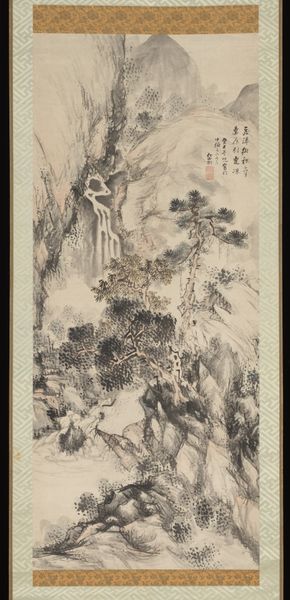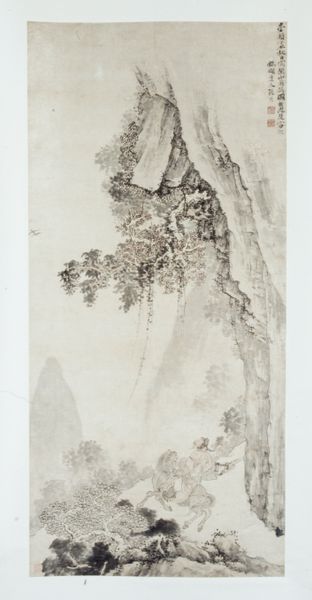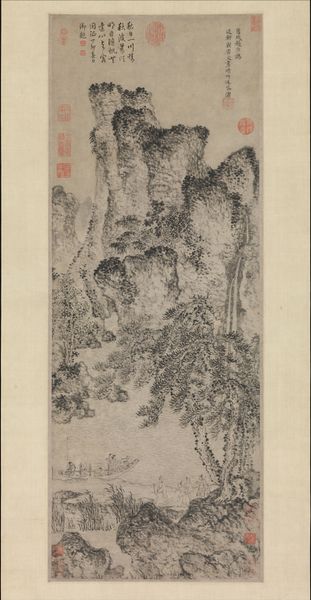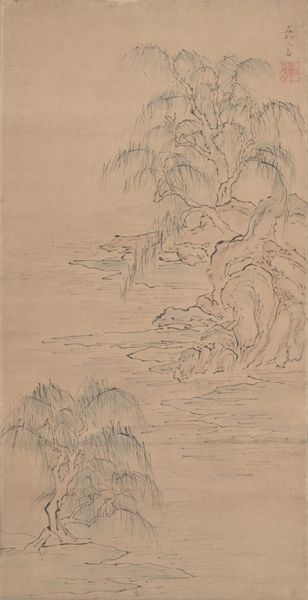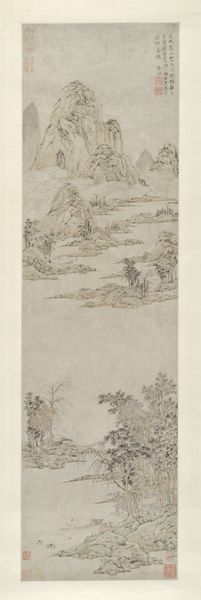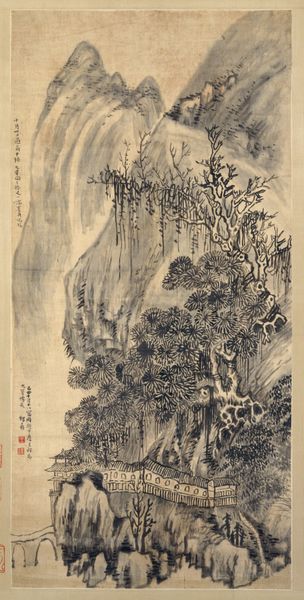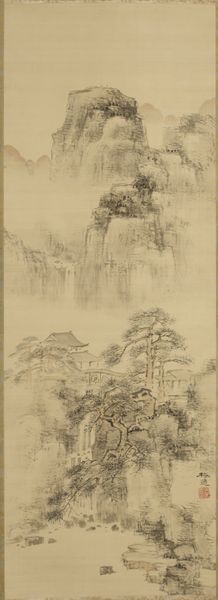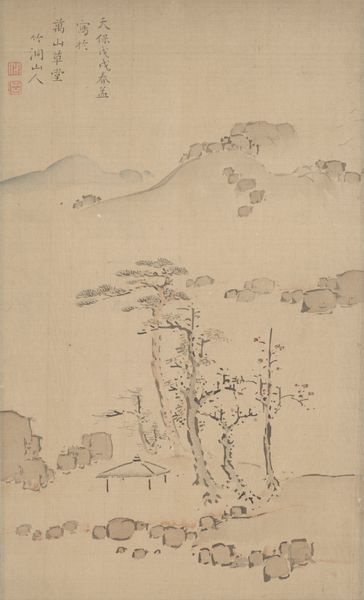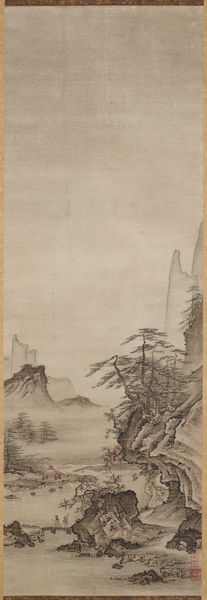
drawing, watercolor, ink
#
drawing
#
asian-art
#
landscape
#
watercolor
#
ink
#
coloured pencil
Dimensions: Image: 20 3/16 × 13 1/4 in. (51.3 × 33.7 cm) Overall with mounting: 57 3/4 × 19 5/16 in. (146.7 × 49.1 cm) Overall with knobs: 57 3/4 in. × 24 in. (146.7 × 61 cm)
Copyright: Public Domain
Curator: The ink and watercolor drawing we’re looking at is Aoki Mokubei’s, "Brewing Tea in the Shade of Trees" from the 1820s. I'm drawn to the way the ink is used, the gradation gives real depth. Editor: My first impression is quietude. There's a feeling of being removed from everything—almost solitary. A commentary on our connection, or perhaps disconnection, with nature, wouldn't you say? Curator: Perhaps, but I am interested in Mokubei's choices with the materials. Paper and ink, relatively inexpensive and accessible, were essential tools for expression. This aesthetic choice democratizes artistic creation, bringing it outside the formal academy. Also, think about the process itself—the slow layering of washes. Editor: Precisely. We should ask whose tradition is this art created for, and whose gaze does it adopt? The literati tradition was entwined with social position and cultural authority. How does his engagement reinforce or perhaps subvert those hierarchies? Curator: I see your point. His distinctive technique—he was also known for pottery so the connection there is undeniable—the intentional roughness counters prevailing tastes and could invite broader participation by artisans into a world often exclusive to scholarly elites. It complicates notions of craft versus "high art," really. Editor: Agreed. And thinking about access— who could afford tea, a valued commodity, and access to leisure activities represented? The very act of brewing and drinking tea becomes a symbolic action, a ritual deeply interwoven with questions of social status and self-cultivation. Who had time for leisure? Curator: Indeed. Considering Mokubei's position, how he navigated cultural currents through his craftsmanship offers us some rich details. The integration of material accessibility with expressive liberty makes you consider traditional definitions about aesthetics and making, really. Editor: Reflecting on Aoki Mokubei’s piece, it shows art’s ability to both mirror and critique the society that created it. It provokes thoughts about labor, materials, and the stories embedded in even the seemingly simplest scene. Curator: It is interesting to realize the impact of such work lies in how art interacts with our shared resources and actions. Material meets cultural insight in remarkable synergy!
Comments
No comments
Be the first to comment and join the conversation on the ultimate creative platform.
